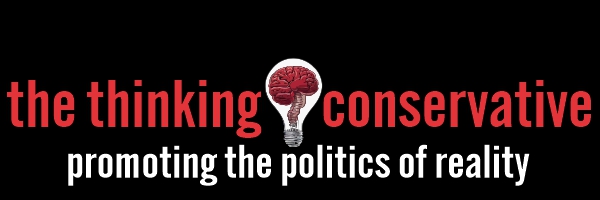Research shows poverty in America, particularly among certain demographic groups and geographic regions, persists with no real solutions on the horizon. The official poverty rate in the United States is 11.5%, with 37.9 million people living in poverty. The Supplemental Poverty Measure (SPM), which accounts for additional factors like government assistance, puts the rate slightly higher at 12.4%.
The rural poverty rate was 15.4% in 2019, compared to 11.9% for metro areas, but these numbers have not improved during the Biden administration.
Poverty rates are higher for Black (17.2%), Latinx (19.3%), and Native American (23.2%) individuals compared to White individuals (9.1%). The Southern and Western regions of the U.S. have the highest poverty rates.
Food insecurity, a measure of poverty, affected one in eight households (12.8%) in 2022, with higher rates for Black (22.4%) and Latinx (20.8%) households compared to White households (9.3%). Child food insecurity increased by 40% in 2022 compared to 2021.
According to recent data, the poverty rate in the United States varies significantly across different demographics and states.
The highest poverty rate exists in New Mexico with 18.2%, followed by Mississippi with 17.8%. Louisiana (16.9%), Arkansas (15.9%), and Kentucky (15.8%) are next on the list.
Several factors contribute to these poverty rates, including educational attainment, access to healthcare, employment opportunities, and geographic location. For instance, states with higher poverty rates often have less access to education and healthcare, and higher rates of unemployment and underemployment.
While Republicans have traditionally focused on smaller government and lower taxes, some conservatives argue for a greater focus on reducing poverty through evidence-based policies that promote self-sufficiency and work.
Proposals include expanding the Earned Income Tax Credit for low-income workers, reforming welfare programs to incentivize employment, and emphasizing the importance of marriage and strong families, as noted by Brookings.
However, polls show a significant divide between Republicans and Democrats on the role of government in addressing poverty and inequality.
Republicans, especially those with higher incomes, are less supportive of using federal programs and tax increases to reduce poverty and income gaps.
To appeal to voters concerned about poverty, Republicans must highlight conservative approaches centered on promoting work, personal responsibility, and evidence-based solutions tailored to specific communities.
However, they will need to reconcile this agenda with their traditional small-government philosophy and address the party’s internal divisions on the extent of federal intervention.
Republican candidates have put forward some key issues and policies to address poverty, including reforming welfare programs to promote work requirements and self-sufficiency rather than dependence on government aid.
This can be achieved by expanding work requirements for able-bodied adults receiving food stamps and housing assistance, for example.
If, and hopefully when Trump wins, one of his first steps should be to provide incentives for employment through measures like expanding the Earned Income Tax Credit (EITC) for low-income workers, which has bipartisan support. He should also reform federal aid programs like Pell Grants to better incentivize work over dependence.
At the same time, Trump should devolve more control to states and local governments by providing them greater flexibility in administering anti-poverty programs tailored to their communities.
The GOP believes that solutions to poverty should involve more leadership from local communities rather than being driven by federal mandates. They advocate for empowering local organizations and community leaders to tailor poverty reduction strategies to the specific needs of their areas. This bottom-up approach is intended to create more sustainable and effective poverty alleviation efforts.
Trump believes in the core Republican philosophy that boosting economic growth and job opportunities, combined with reforming welfare to promote work, is more effective at reducing poverty than just increasing government aid and entitlements.
However, there are divisions within the party over the extent of federal intervention needed.
Programs like Social Security, the Earned Income Tax Credit (EITC), and Supplemental Nutrition Assistance Program (SNAP) play crucial roles in reducing poverty. For example, Social Security lifts 28.9 million people out of poverty, while refundable tax credits help 6.4 million people.
The GOP has proposed several strategies to reduce poverty, focusing on economic growth, job creation, and restructuring federal aid programs. Here are some key recommendations:
Republicans emphasize the need to create good-paying jobs that meet family needs. They advocate for rebuilding the economy through investment in key industries, including manufacturing and energy sectors, to provide stable employment and boost economic security. This approach is seen as a way to lift people out of poverty by providing them with the means to earn a living wage.
A major GOP recommendation involves restructuring federal antipoverty programs to eliminate inefficiencies and promote better coordination.
For instance, Rep. Paul Ryan has called for a more streamlined approach that consolidates various aid programs, allowing for better coordination and reducing work disincentives. This includes blending programs like Medicaid, food stamps, and child care subsidies to make them more effective and accessible at the local level.
Some factions, such as the Republican Study Committee, have proposed reforms to Social Security and other welfare programs to ensure their long-term viability. These proposals include raising the retirement age and adjusting benefit formulas. However, these suggestions are contentious and not universally accepted within the party.
The GOP also highlights the importance of education and job training as critical tools for reducing poverty. They support policies that enhance vocational training and education opportunities to help individuals acquire the skills needed for well-paying jobs in the modern economy.
After four years of a Biden presidency, more needs to be done to alleviate widespread poverty across America.
Only Trump can achieve this.







